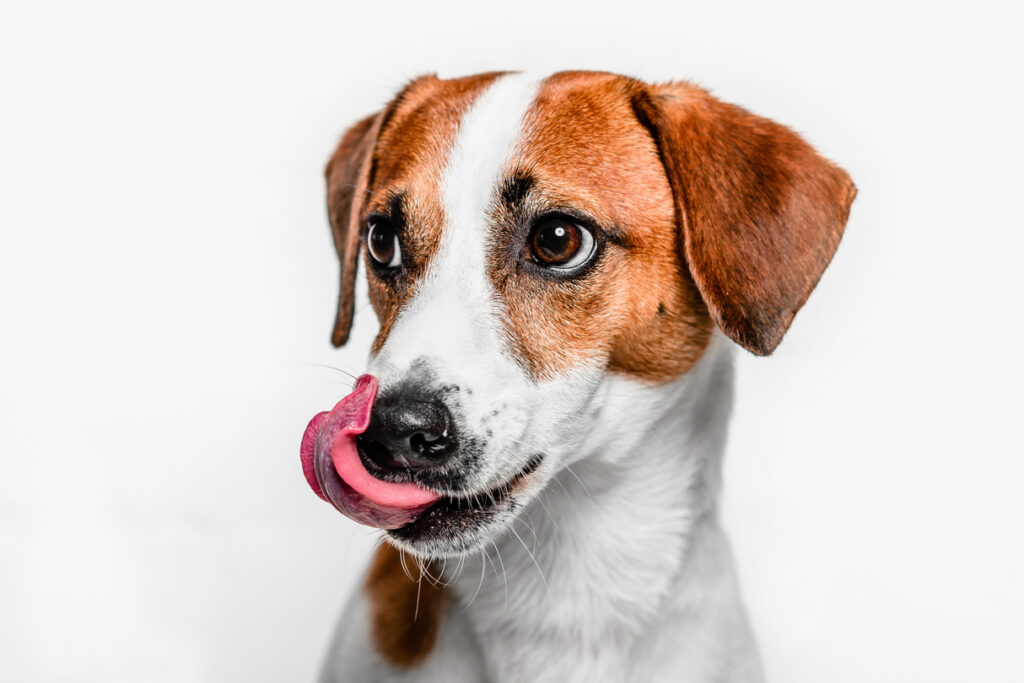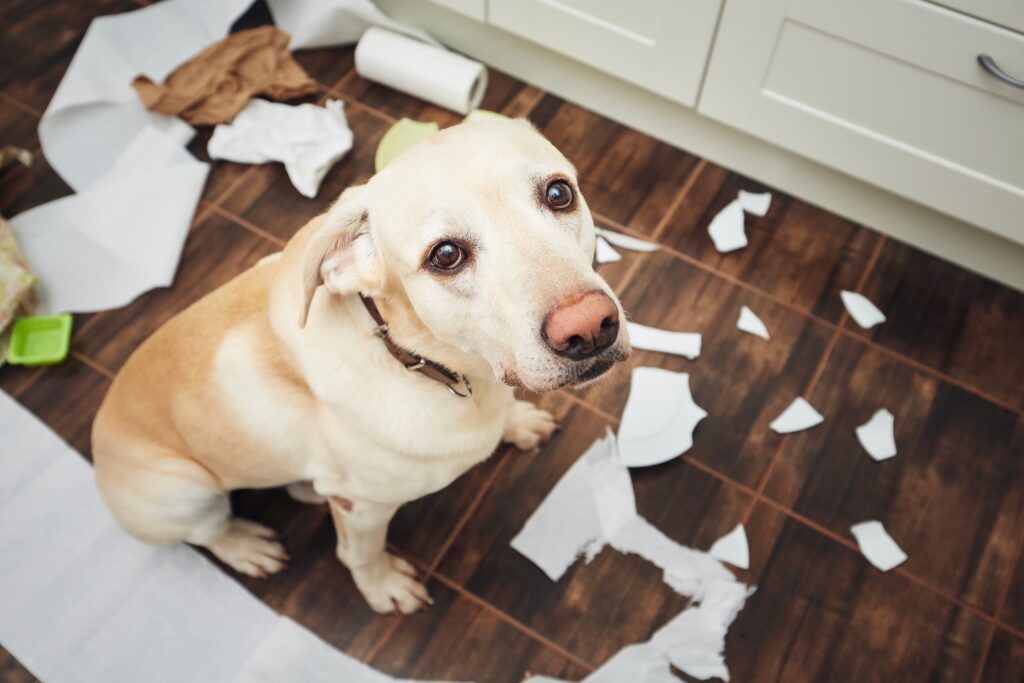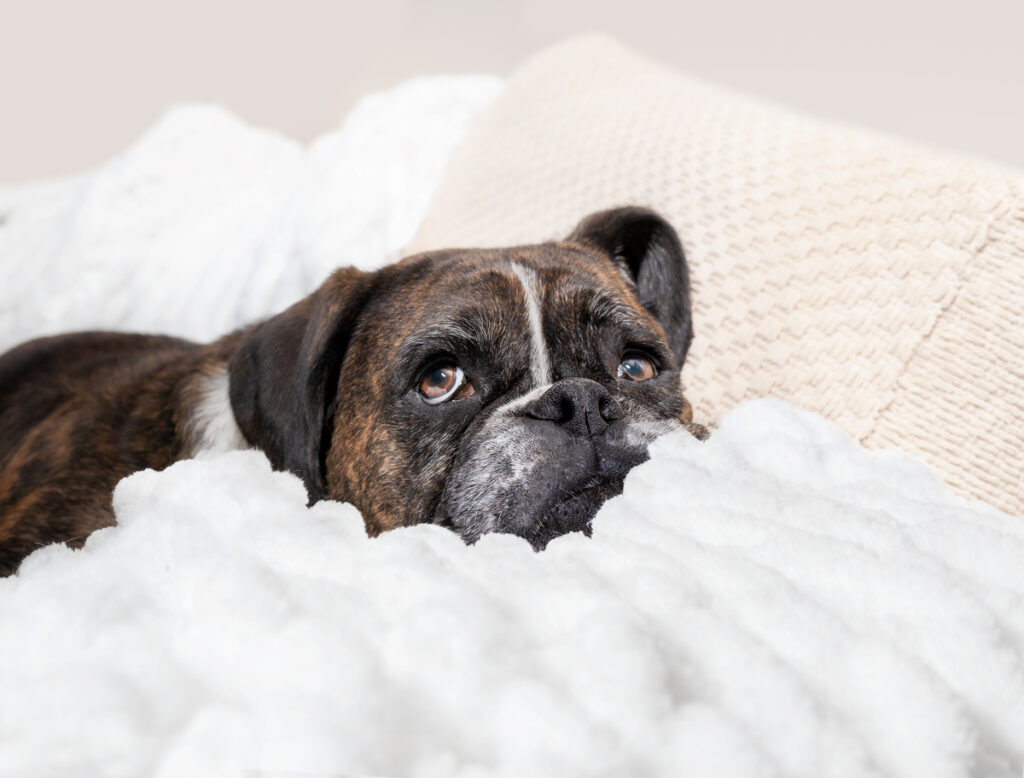When we, as pet owners, are feeling stressed, we find ways to cope through different activities like listening to your favourite music, exercising, and many more. With your dog by your side, they also provide their own way of reducing your stress. However, getting stressed with your dog can also affect them – they can sense when their owners are stressed since they’re so attuned to them.
Dogs can also experience stress, and their way of coping with it is not the same as ours. It’s a normal reaction that happens to all dog breeds, some of which are similar to common dog behaviours, but once it happens too many times, it causes them to act irrationally and cause other issues. Repeated unpleasant behaviour is a dog’s response to their feeling of anxiousness and stress. That being said, how do we prevent dog stress and anxiety? How do we provide them comfort, so they can relax, too?
The signs of dog stress and anxiety may not always be obvious. Here at Pretty Pets Kennel, we’ll explain the causes, signs and symptoms, and ways to reduce or prevent stress.
Common Causes of Dog Stress and Anxiety

There are many reasons why a dog can experience stress. According to American Kennel Club, dog anxiety is commonly caused by fear, separation, or ageing. Depending on the situation, dogs respond differently to things they experience in their surroundings. It can also be caused by their lack of training and discipline, the dog’s personality, and where they grew up in.
Fear
Dog anxiety can be triggered by fear because of loud noises (commonly from fireworks or thunderstorms), exposure to strangers or animals (if they have not been properly socialized or were mistreated by past owners or breeders in the past), seeing unfamiliar objects in your home (for example plastic bags or umbrellas), and being in new places or environments (like being brought to the vet, being inside the car, or moving to a new house). Dogs may react to this and adjust normally, but if the way they respond each time the stimuli is present causes a change in their behaviour in many ways, that can be a sign of an anxious dog.
Separation
One of the causes of dog stress and anxiety is when they are left alone by their owners, especially for long periods of time. Also known as “Separation Anxiety”, it affects a dog when they are separated from their owner and usually exhibits different behaviours they wouldn’t normally do such as urinating inside the house, destructive behaviour, and scratching at doors or windows to name a few. When dogs are not used to being on their own, it leaves them unsettled and stressed out. The other causes of this kind of anxiety can also be due to sudden change in ownership, loss of an owner, abrupt change in living situation, or changes in routine.
Ageing
This dog anxiety happens to older dogs that develop cognitive dysfunction syndrome (CDS), wherein the usual functions of their minds like awareness, learning, or memorizing decline. When this happens, your dog can get anxious and confused.
To add to this, there has been a recent study from Nature’s Scientific Reports, that indicates that when pet owners are stressed and emotional, their dog will likely also mirror what they’re feeling.
Signs and Symptoms of Dogs Dealing with Anxiety

The indicators of dog anxiety can be obvious or subtle; there are many signs to look out for when it comes to dogs who are stressed:
- Restlessness or Pacing
- Panting (when they’re not excited, tired, or affected by heat)
- Running Away and/or Hiding
- Aggression
- Urinating or Defecating
- Destroying or Chewing Objects at Home
- Shaking or Trembling
- Inability to Settle Down
- Barking, Howling, or Whining
- Excessive Licking and Chewing On Their Body
- Lack of Appetite
- Change in Body Posture (Tail between the legs, stiff body, alert ears, and lowered head)
- Avoidance
These kinds of behaviour can be seen as a natural response to some events that are anxiety-inducing. However, these can also help you understand how your dog is feeling. Dog anxiety ranges from mild to severe, and how it manifests depends on the situation and experience. This is why, if you see the signs that are recurring, it’s better to act on them quickly before it becomes worse and causes serious problems.
How to Prevent and Treat Dog Anxiety and Stress

The best way to approach your dog when they’re anxious and stressed is not to overwhelm them too much and to make sure to remove the source of it. However, simply removing the source of stress isn’t enough; if the signs or symptoms of your dog’s anxiety are recurring, the best way to get it properly diagnosed and treated is to bring them to the veterinarian. There could be other medical issues that they may discover and treat as well. They will usually recommend a combination of the following:
- Behavioural Modification and Counter-conditioning
Helping the dog change their response to what usually triggers their anxiety. It is usually introduced to them slowly with gradual exposure and a proper approach. Having a safe environment and rewarding positive behaviour can help in managing anxiety.
- Anxiety Medication
The veterinarian will prescribe medication that is also used as antidepressants to help your dog cope with stress and anxiety. Depending on the usual cause of anxiety – situational or health-wise – there are medications available to help reduce the symptoms. Usually, it is paired with behavioural modification and training.
- Natural Calming Supplements
The veterinarian will also recommend calming natural remedies such as pheromone diffusers or collars and aromatherapy.
There are plenty of ways you can prevent anxiety and stress in dogs while helping them to relax, especially at home. Here are some of the best ways to reduce dog anxiety and stress.
- Feed them healthy, high-quality food
- Give them daily exercise to keep them engaged
- Be consistent with training
- Avoid taking your dogs in stressful or anxiety-inducing situations (ex. If they’re not used to walking in big crowds or try to avoid letting them run into other dogs and animals)
- Keep them entertained and mentally stimulated with toys and games
- Avoid raising your voice at your dogs
- When dealing with accidents or mistakes, stay calm and do not get angry at them
- For pet owners: remember to practice self-care to avoid stress and other negative emotions (Remember, your dog can sense and mirror how you’re feeling)
- Spend quality time with your dogs
- Give them things that will make them comfortable and relaxed, such as their favourite toys, comfort blankets, or items that contain your scent (familiar scents help calm them down while making them feel secure)


